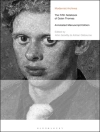This study argues that allusion is a central part of classic British detective fiction. It demonstrates the fraught status of Shakespeare and the Bible during the Golden Age of the British detective novel, and the cultural currents which novelists navigated whilst alluding to them. The first part traces the complex web of allusions to Shakespeare and the Bible which appear in the novels of Agatha Christie and Dorothy L. Sayers, examining the meanings these allusions produce. The second part explores the way in which Sayers’ own collection of detective novels became a canon, on which later novelists exercised those same allusive practices. It studies allusions to Sayers’ novels throughout the twentieth century and into the twenty-first, from Gladys Mitchell and P.D. James to Reginald Hill and Sujata Massey. This study reveals allusion as a shaping force at the origin of the classic British detective novel, and a continuing element in its identity.
Table des matières
Introduction: Shakespeare, the Bible and the Textual Crisis.- Section I.- Chapter One: Sayers, Satan, Milton, Donne.- Chapter Two: Seeing Darkly, Seeing Visions: Christie’s Bible.- Chapter Three: Three Ordinary, Normal Old Women: Christie’s Shakespeare.- Section II: Introduction: The New Canon.- Chapter Four: Rival Queens of Crime.- Chapter Five: Let’s Have Eight Other Gaudy Nights.- Chapter Six: Sayers’s Followers: Where the Bodies and the Books are Buried.- Conclusion.
A propos de l’auteur
Jem Bloomfield is Assistant Professor of Literature at the University of Nottingham, UK. His research interests focus around detective fiction, British mid-century writing, and the reception histories of Shakespeare and the Bible. His books include Words of Power: Reading Shakespeare and the Bible (2016), Witchcraft and Paganism in Midcentury Women’s Detective Fiction (2022) and Paths in the Snow: A Literary Journey Through The Lion, the Witch and the Wardrobe (2023).












